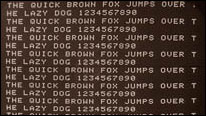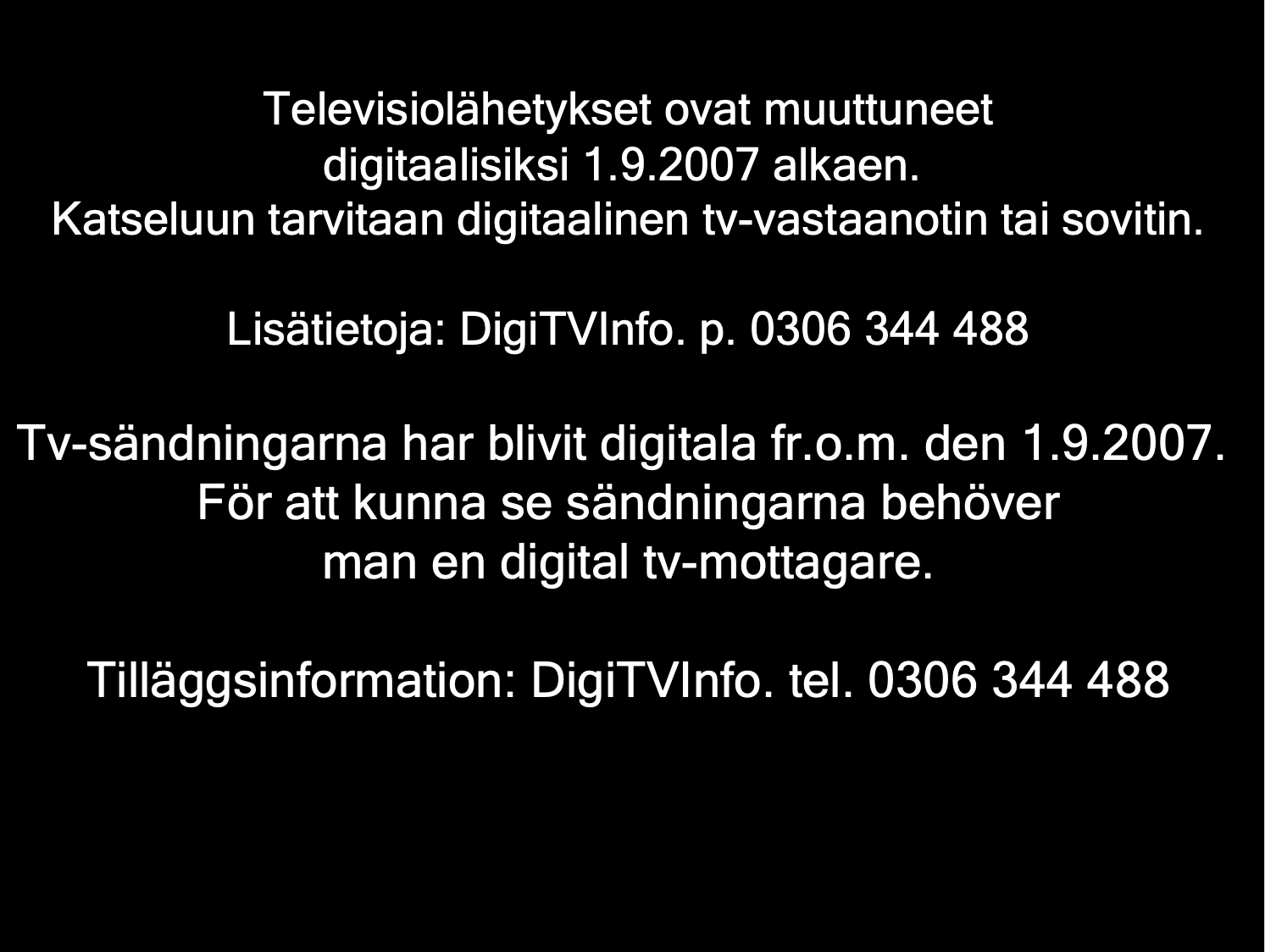|
Television In Switzerland
Television in Switzerland was introduced in 1950, with regular broadcasts commencing in 1953. People who live in Switzerland are required by law to pay a television licence fee, which is used to finance the public radio and television service SRG SSR. Since 1 January 2021, the Licence fee cost in all the linguistic regions of Switzerland is 335 CHF per year or 83.75 CHF quarterly (with a 2 CHF fee if paid via LSV+, Debit Direct, or e-billing, and the invoice is sent via email), counting both radio and television licences. All licence fee payers are entitled under the law to services of equal quality. The fee is charged per household and not per person, with empty dwellings being exempt. The fee is determined by the Federal Council. History The history of television in Switzerland began in 1939 when the first test transmissions commenced. Regular transmissions started in 1953, at first only one hour a day for five days a week, and only in German: transmissions in French st ... [...More Info...] [...Related Items...] OR: [Wikipedia] [Google] [Baidu] |
Teletext
Teletext, or broadcast teletext, is a standard for displaying text and rudimentary graphics on suitably equipped television sets. Teletext sends data in the broadcast signal, hidden in the invisible vertical blanking interval area at the top and bottom of the screen. The teletext decoder in the television buffers this information as a series of "pages", each given a number. The user can display chosen pages using their remote control. In broad terms, it can be considered as Videotex, a system for the delivery of information to a user in a computer-like format, typically displayed on a television or a dumb terminal, but that designation is usually reserved for systems that provide bi-directional communication, such as Prestel or Minitel. Teletext was created in the United Kingdom in the early 1970s by John Adams, Philips' lead designer for video display units to provide closed captioning to television shows for the hearing impaired. Public teletext information services were ... [...More Info...] [...Related Items...] OR: [Wikipedia] [Google] [Baidu] |
Digital Television Transition
The digital television transition, also called the digital switchover (DSO), the analogue switch/sign-off (ASO), the digital migration, or the analogue shutdown, is the process in which older analogue television broadcasting technology is converted to and replaced by digital television. Conducted by individual nations on different schedules, this primarily involves the conversion of analogue terrestrial television broadcasting infrastructure to Digital terrestrial television (DTT), a major benefit being extra frequencies on the radio spectrum and lower broadcasting costs, as well as improved viewing qualities for consumers. The transition may also involve analogue cable conversion to digital cable or Internet Protocol television, as well as analog to digital satellite television. Transition of land based broadcasting had begun in some countries around 2000. By contrast, transition of satellite television systems was well underway or completed in many countries by this time. ... [...More Info...] [...Related Items...] OR: [Wikipedia] [Google] [Baidu] |
Chablais
The Chablais (; ; ) was a province of the Duchy of Savoy. Its capital was Thonon-les-Bains. The Chablais was elevated to a duchy in 1311 by Henry VII, Holy Roman Emperor. This region is currently divided into three territories, the '' Chablais savoyard'', the '' Chablais valaisan'', and the '' Chablais vaudois'', and is now split across two countries: France (department of Haute-Savoie) and Switzerland (cantons of Valais and Vaud). The Chablais Alps is a mountain range situated between the two countries, but the Chablais region itself also includes a large portion of the Vaud Alps and the Rhône Valley from Saint-Maurice, Switzerland, to Lake Geneva Lake Geneva is a deep lake on the north side of the Alps, shared between Switzerland and France. It is one of the List of largest lakes of Europe, largest lakes in Western Europe and the largest on the course of the Rhône. Sixty percent () .... The Swiss section of the Chablais is served by the Transports Publics du Chab ... [...More Info...] [...Related Items...] OR: [Wikipedia] [Google] [Baidu] |
Valais
Valais ( , ; ), more formally, the Canton of Valais or Wallis, is one of the cantons of Switzerland, 26 cantons forming the Switzerland, Swiss Confederation. It is composed of thirteen districts and its capital and largest city is Sion, Switzerland, Sion. Valais is situated in the southwestern part of the country. It borders the cantons of Canton of Vaud, Vaud and Canton of Bern, Bern to the north, the cantons of Canton of Uri, Uri and Ticino to the east, as well as Italy to the south and France to the west. It is one of the three large southern Alps, Alpine cantons, along with Ticino and Grisons. It is a bilingual canton, French and German being its two official languages. Traditionally, the canton is divided into Lower, Central, and Upper Valais, the latter region constituting the German-speaking minority. Valais is essentially coextensive with the valley of the Rhône from its headwaters to Lake Geneva, separating the Pennine Alps from the Bernese Alps, the two largest mount ... [...More Info...] [...Related Items...] OR: [Wikipedia] [Google] [Baidu] |
2008 In Television
2008 in television may refer to: * 2008 in American television for television-related events in the United States. * 2008 in Australian television for television-related events in Australia. * 2008 in Belgian television for television-related events in Belgium. * 2008 in Brazilian television for television-related events in Brazil. * 2008 in British television for television-related events in the United Kingdom. ** 2008 in Scottish television for television-related events in Scotland. * 2008 in Canadian television for television-related events in Canada. * 2008 in Croatian television for television-related events in Croatia. * 2008 in Danish television for television-related events in Denmark. * 2008 in Dutch television for television-related events in the Netherlands. * 2008 in Estonian television for television-related events in Estonia. * 2008 in French television for television-related events ... [...More Info...] [...Related Items...] OR: [Wikipedia] [Google] [Baidu] |
Radiotelevisione Svizzera Di Lingua Italiana
Radiotelevisione svizzera, officially Radiotelevisione svizzera di lingua italiana (; "Swiss Radiotelevision of the Italian Language"), shortened to RSI (formerly RTSI until 2009), is a subsidiary of the Swiss Broadcasting Corporation (SRG SSR), operating in Italian-speaking Switzerland. Besides Italian, it also handles the production and broadcasting of programs in Lombard. Its administrative headquarters are located in Via Canevascini in Lugano. History ''Radio svizzera di lingua italiana'' was established in 1925 as ''Radio Monte Ceneri'', originally named after the mountain where the transmitter was placed. After several years of experimental broadcast, in 1933 the ''Società svizzera di Radiodiffusione'' (Swiss Radio Broadcasting Corporation) began regular transmissions in Ticino and Grigioni. The intentions of its founders were to promote cohesion in the confederation while promoting the value of the Swiss Italian culture. In the 1930s and 1940s, when most of Switzerla ... [...More Info...] [...Related Items...] OR: [Wikipedia] [Google] [Baidu] |
2006 In Television
2006 in television may refer to: * 2006 in American television for television-related events in the United States. * 2006 in Australian television for television-related events in Australia. * 2006 in Belgian television for television-related events in Belgium. * 2006 in Brazilian television for television-related events in Brazil. * 2006 in British television for television-related events in the United Kingdom. ** 2006 in Scottish television for television-related events in Scotland. * 2006 in Canadian television for television-related events in Canada. * 2006 in Croatian television for television-related events in Croatia. * 2006 in Danish television for television-related events in Denmark. * 2006 in Dutch television for television-related events in the Netherlands. * 2006 in Estonian television for television-related events in Estonia. * 2006 in French television for television-related events in France. * 2006 in German television for television-related events in ... [...More Info...] [...Related Items...] OR: [Wikipedia] [Google] [Baidu] |
RSI La 2
RSI La 2 (''RSI La due'') is a Swiss public television channel owned by Radiotelevisione Svizzera di lingua Italiana. It is a sister channel of RSI La 1, broadcast in Italian. It mainly airs sport programmes, but also reruns and music shows. It does not broadcast any newscasts. History TSI launched its second channel in 1997, basing it on programming for a younger audience and sports. Unlike RSI La 1, RSI La 2 is not broadcast across the whole of Switzerland, but only in Italian-speaking Switzerland. The channel ended analogue broadcasts on 24 July 2006, from that date being available only on digital terrestrial television, satellite and cable. It was the first channel of the SRG SSR network to make the transition. Logos File:No image available.svg, 1997-1999 File:No image available.svg, 1999 File:No image available.svg, 1999-2009 File:RSI La 2.svg, 2009-2012 File:RSI La 2 2012.svg, 2012- File:RSI La 2 HD.svg, HD logo, since 2012 Programmes Information * ''L'Agenda' ... [...More Info...] [...Related Items...] OR: [Wikipedia] [Google] [Baidu] |
RTS Deux
RTS 2 (''RTS deux''), launched on 1 September 1997 as TSR2 and renamed in 2012, is the second Swiss (French-speaking) public television channel owned by RTS Radio Télévision Suisse (RTS); the other is RTS 1. Logos and identities TSR2 logo (1997-2006).png, TSR 2's logo from 1997 to 2006 File:TSR_2_alt.svg, TSR 2's logo from 2006 to 2011 File:RTS deux.svg, RTS Deux's logo from 2011 to 2015 File:RTS Deux logo 2015.svg, RTS Deux's logo from 2015 to 2019 File:RTS 2 logo 2019.svg, RTS 2's logo from 2019 to 2023 Programming The channel's programming is composed of reruns from the RTS 1 television archive, children's television programs in the morning and early afternoon, teens programs in the late afternoon and evening and cultural programs or sports transmissions during prime time Prime time, or peak time, is the block of broadcast programming taking place during the middle of the evening for television shows. It is mostly targeted towards adults (and sometimes families ... [...More Info...] [...Related Items...] OR: [Wikipedia] [Google] [Baidu] |
SRF Zwei
SRF zwei (''Swiss Radio and Television Two'') is a Swiss German-language free-to-air television channel run under the public SRG SSR broadcasting group. History The channel was launched in 1997 as 'SF 2' as the German-speaking replacement for the formerly nationwide second public channel S Plus (which originally launched in 1993 and was subsequently renamed Schweiz – Suisse – Svizzera – Svizra 4, Schweiz 4 in 1995). It is the second of the three national German-language channels in Switzerland (the others being SRF 1 and SRF info). SF 2 was renamed to SF zwei on 5 December 2005, in order to differentiate it more from its sister channel SF 1. An HD version launched on 29 February 2012. Programming SRF zwei mainly broadcasts programmes aimed towards a younger audience. There is a heavy emphasis on movies, TV series and sporting events, much like its Austrian equivalent ORF 1. Feature films and TV series are often broadcast with both the German dub and the original sound ... [...More Info...] [...Related Items...] OR: [Wikipedia] [Google] [Baidu] |


